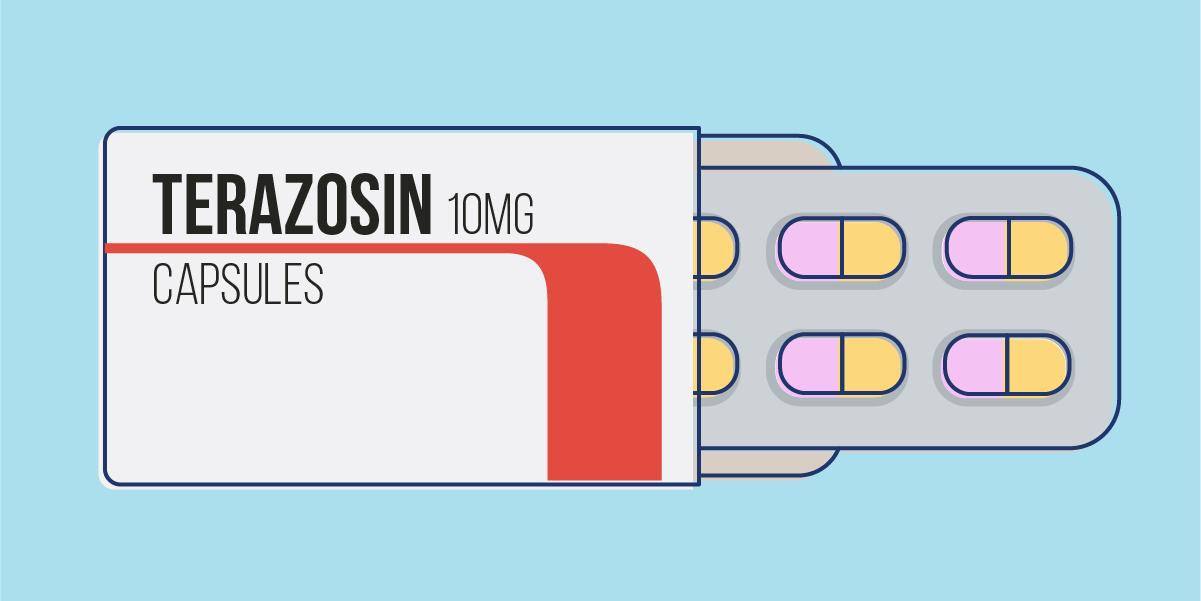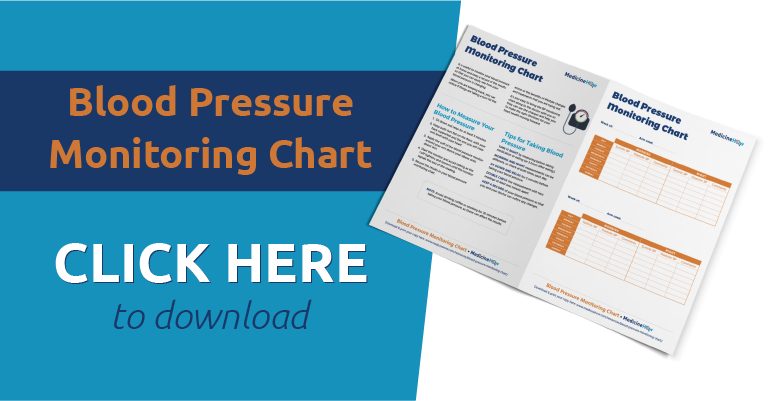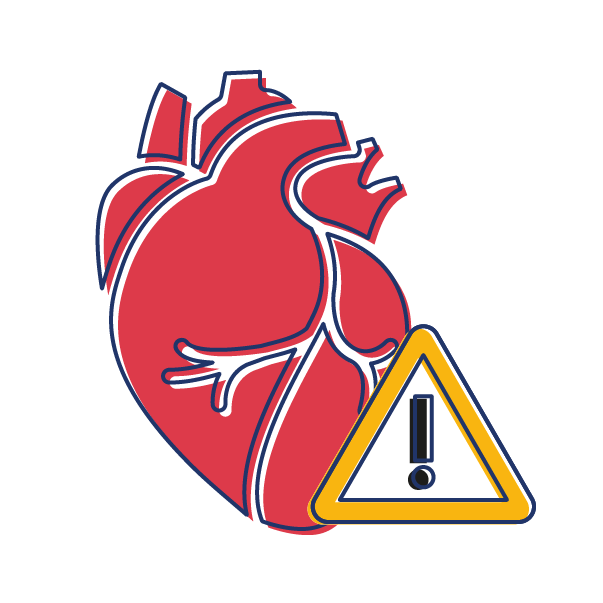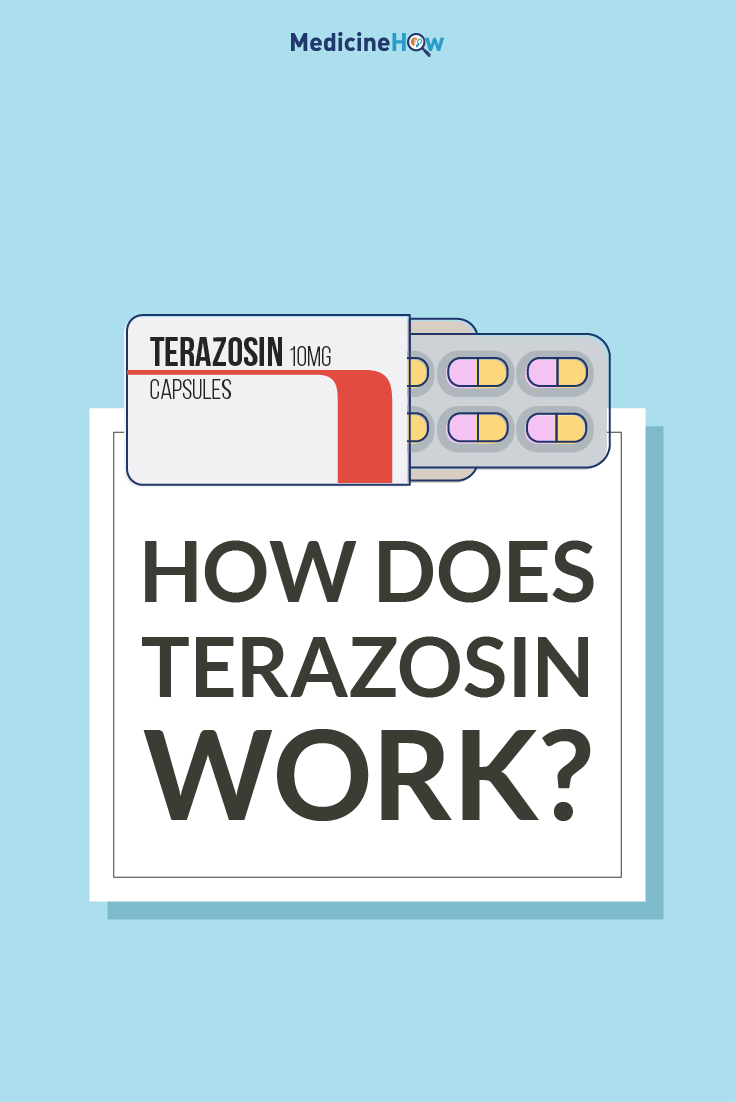
Terazosin works by blocking alpha1 adrenoreceptors in the body so that a neurotransmitter called noradrenaline can’t activate it as usually does. This causes the smooth muscles that surround the blood vessels to relax, allowing the blood to pass through more easily. It can be used to lower blood pressure and manage hypertension or in the treatment of benign prostatic hypertrophy (BPH).

Brand Names and Doses
Terazosin is the generic name of the drug, which is the active ingredient that has an effect on the body – the generic name. You might recognise it better by the brand name, Hytrin, which contains terazosin.
Hytrin is available in three different doses: 2 mg, 5 mg or 10 mg.
It is best to start with a low dose of terazosin, such as 1 mg (a tablet of the lowest dose) daily. This allows your body to get used to the effects of the drug and reduces the change of side effects, like orthostatic hypertension. Your doctor will then help you to slowly increase your dose until your blood pressure is in the right range, until a maximum dose of 10 mg a day.
Because your body take a relatively long time to excrete the drug from your body, you only need to take one dose each day. It’s best for you to take the dose at nighttime, particularly when you first start taking it, to reduce side effects like orthostatic hypertension.
What type of drug is terazosin?
Terazosin is a type of medication called a selective alpha blocker, which is a class of drugs that work in a similar way. Another example of an alpha blocker drug is Prazosin.
Terazosin is unique because it takes longer to be excreted from your body, so you will only need to take one dose per day.
How does terazosin work?
A![]() lpha1-adrenergic receptors are present in various places around your body and becomes activated when a neurotransmitter called noradrenaline attaches it, which sends the message to the surrounding smooth muscles to contract.
lpha1-adrenergic receptors are present in various places around your body and becomes activated when a neurotransmitter called noradrenaline attaches it, which sends the message to the surrounding smooth muscles to contract.
Terazosin attaches to the alpha1-adrenergic receptors and blocks the noradrenaline from activating the receptors, so that the smooth muscles can’t contract as usual.
There are smooth muscles that surround the blood vessels in the body, helping to regulate the pressure of the blood. The blood pressure increases when they contract and decreases when they relax.
When you take terazosin, the muscles around the blood vessels aren’t able to contract as much as usual, so they can enlarge and allow the blood to pass through more easily, lowering the blood pressure. Terazosin also has an effect on other alpha-receptors in the body, such as those in the bladder, which can lead to side effects such as urinary incontinence.
What is terazosin used for?
Terazosin can be used to manage hypertension or benign prostatic hyperplasia (BPH).
It helps to manage hypertension because it causes the muscles around the blood vessels to relax, allowing the vessels to expand and the blood to pass through more easily, leading to lower blood pressure. As it may increase the risk of heart failure, it’s usually recommended after other medications for blood pressure, such as ACE inhibitors or calcium channel blockers, have not had an adequate response.
For BPH, terazosin can help to relax the smooth muscles in the groin region to help you urinate.
Side Effects
The most common side effect of terazosin is postural hypotension, which involves a sudden decrease in blood pressure when you stand up. This is more likely at the beginning of treatment for people who are elderly, have depleted fluid stores or are taking diuretic.
![]() Some people may also notice signs of blood pressure that is too low, such as:
Some people may also notice signs of blood pressure that is too low, such as:
- Headache
- Tiredness
- Dizziness
- Flushing
This often happens because the dose is too high, so simply lowering the dose can help to get your blood pressure back into the normal range. It’s important to start with a low dose of terazosin and gradually increase it to allow your body to get used to the drug and reduce the risk of these effects
Some people may also notice some incontinence or leakage of urine when they take terazosin because the smooth muscles in the neck of the bladder also become more relaxed and may allow some urine to escape from the bladder when you laugh or cough.
Terazosin is not likely to be the best choice of drug for you in several situations, such as:
 Heart Failure
Heart Failure
If you have heart failure due to mechanical damage of the heart, such as aortic stenosis, terazosin it may worsen the condition.
Orthostatic Hypotension
If you are more likely to be affected by orthostatic hyp0tension (this includes elderly people, people with fluid volume depletion and those taking diuretic medications) terazosin may not be the best choice for you.
Cataract Surgery
If there is a possibility that you may need cataract surgery in the future, you should not take terazosin because there is an increased risk of intra-operative floppy iris syndrome, even if you stop taking the drug before the surgery.
Stress Incontinence
If you suffer from stress incontinence, terazosin can worsen symptoms because the drug also causes the muscles that help to contain urine inside the bladder to relax.

Pregnancy and Breastfeeding
Terazosin is not recommended to be used in the first trimester of pregnancy but may be used with caution later in the pregnancy to manage high blood pressure if other treatments have not worked sufficiently.
If you are breastfeeding, you can take terazosin with caution but there is limited research to confirm that it is entirely safe.
Pin it!


